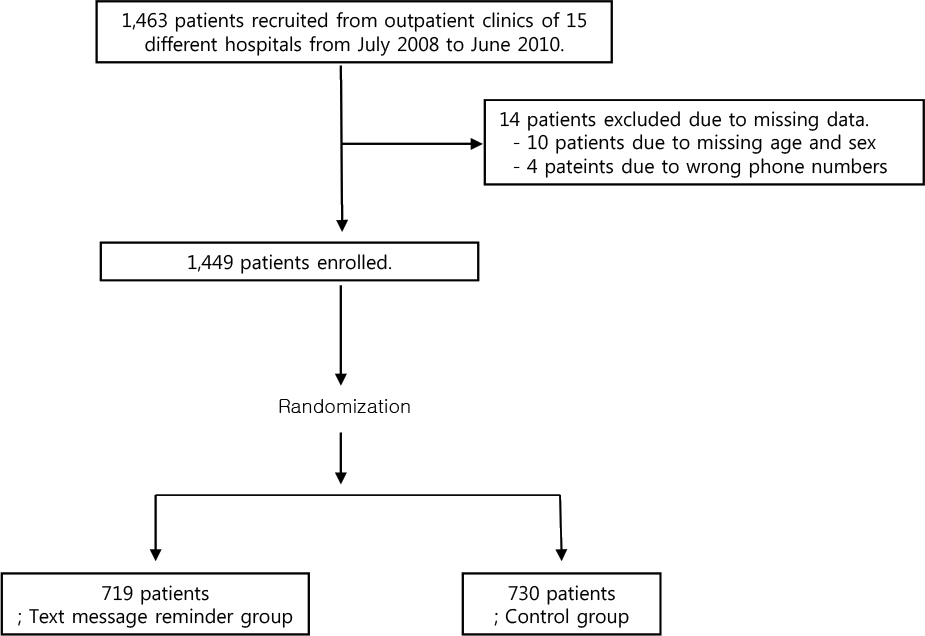References
1. Prospective Studies Collaboration. Age-specific relevance of usual blood pressure to vascular mortality: a metaanalysis of individual data for one million adults in 61 prospective studies. Lancet 2002;360(9349):1903–13.
3. Korea Centers for Disease Control and Prevention. Korea Health Statistics 2010: Korea National Health and Nutrition Examination Survey (KNHANES V-1) Available from:
https://knhanes.cdc.go.kr/knhanes/index.do.
4. Egan BM, Zhao Y, Axon RN. US trends in prevalence, awareness, treatment, and control of hypertension, 1988–2008. JAMA 2010;303(20):2043–50.
6. Grant RW, Singer DE, Meigs JB. Medication adherence before an increase in antihypertensive therapy: a cohort study using pharmacy claims data. Clin Ther 2005;27(6):773–81.
7. Cramer JA, Benedict Á, Muszbek N, Keskinaslan A, Khan ZM. The significance of compliance and persistence in the treatment of diabetes, hypertension and dyslipidaemia: a review. Int J Clin Pract 2008;62(1):76–87.
8. Park JH. Antihypertensive drug medication adherence of national health insurance beneficiaries and its affecting factors in Korea [dissertation] Seoul: Seoul National University; 2006. Korean.
9. Choi NH, Kim HK, Lee HR, Kim KS. A Study of the Factors influencing the Compliance of Hypertensive Patients to Therapy -Centered on the Registered Patients of Hypertension in a Rural Clinic–. Family physician 1991;12(10):1–12.
10. DiMatteo MR, Giordani PJ, Lepper HS, Croghan TW. Patient adherence and Medical treatment outcomes: a metaanalysis. Med Care 2002;40(9):794–811.
11. Touchette DR, Burns AL, Bough MA, Blackburn JC. Survey of medication therapy management programs under Medicare Part D. J Am Pharm Assoc 2006;46(6):683–91.
13. Chen Z, Fang L, Chen L, Dai H. Comparison of an SMS text messaging and phone reminder to improve attendance at a health promotion center: a randomized controlled trial. Journal of Zhejiang University SCIENCE B 2008;9(1):34–8.
15. Viswanathan H, Lambert BL. An inquiry into medication meanings, illness, medication use, and the transformative potential of chronic illness among African Americans with hypertension. Research in Social and Administrative Pharmacy 2005;1(1):21–39.
16. Gohar F, Greenfield SM, Beevers DG, Lip GY, Jolly K. Self-care and adherence to medication: a survey in the hypertension outpatient clinic. BMC Complementary and Alternative Medicine 2008;8:4.
17. Egan BM, Lackland DT, Cutler NE. Awareness, knowledge, and attitudes of older Americans about high blood pressure: implications for health care policy, education, and research. Arch Intern Med 2003;163(6):681–7.
18. Lenfant C, Chobanian AV, Jones DW, Roccella EJ. Seventh report of the Joint National Committee on the Prevention, Detection, Evaluation, and Treatment of High Blood Pressure (JNC 7): resetting the hypertension sails. Circulation 2003;107:2993–4.
19. The Korean Society of Hypertension. 2004 Korean Hypertension Treatment Guidelines The Korean Society of Hypertension;2005.
20. Oh JY, Yang YJ, Kim BS, Kang JH. Validity and Reliability of Korean Version of International Physical Activity Questionnaire (IPAQ) Short Form. Korean J Fam Med 2007;28(7):532–41.
21. Kim HJ, Paik HY, Lee SY, Shim JE, Kim YS. Salt usage behaviors are related to urinary sodium excretion in normotensive Korean adults. Asia Pacific Journal of Clinical Nutrition 2007;16(1):122–7.
22. Pop-Eleches C, Thirumurthy H, Habyarimana JP, Zivin JG, Goldstein MP, de Walque D, et al. Mobile phone technologies improve adherence to antiretroviral treatment in a resource-limited setting: a randomized controlled trial of text message reminders. AIDS 2011;25(6):825–34.
23. Dick JJ, Nundy S, Solomon MC, Bishop KN, Chin MH, Peek ME. Feasibility and usability of a text message-based program for diabetes self-management in an urban African-American population. Journal of Diabetes Science and Technology 2011;5(5):1246–54.
24. Hussein WI, Hasan K, Jaradat AA. Effectiveness of mobile phone short message service on diabetes mellitus management; the SMS-DM study. Diabetes Res Clin Pract 2011;94(1):e24–6.
25. Márquez Contreras E, de la Figuera von Wichmann M, Gil Guillén V, Ylla-Catalá A, Figueras M, Balaña M, at al. Effectiveness of an intervention to provide information to patients with hypertension as short text messages and reminders sent to theirmobile phone (HTA-Alert). Aten Primaria 2004;34(8):399–405.
26. Park KA. The related factors on medication adherence in elderly patients with hypertension or diabetes mellitus [dissertation] Daegu: Kyungpook National University; 2010. Korean.
27. Kim HW, Lee YJ, Youn BB. A follow up study for drop-out of hypertensive patients registered in a community hospital. Family Physician 1986;7(1):1–11.



